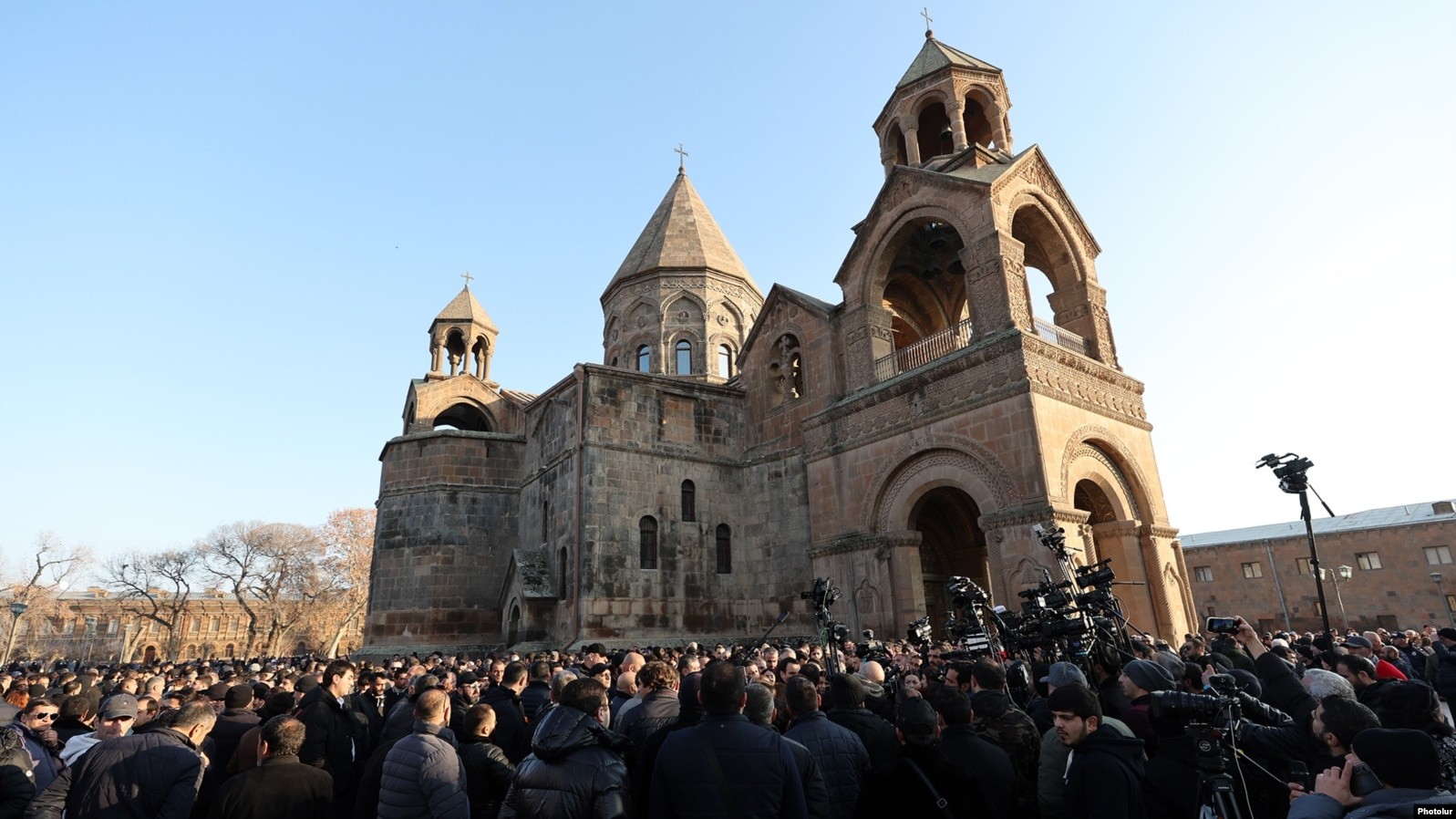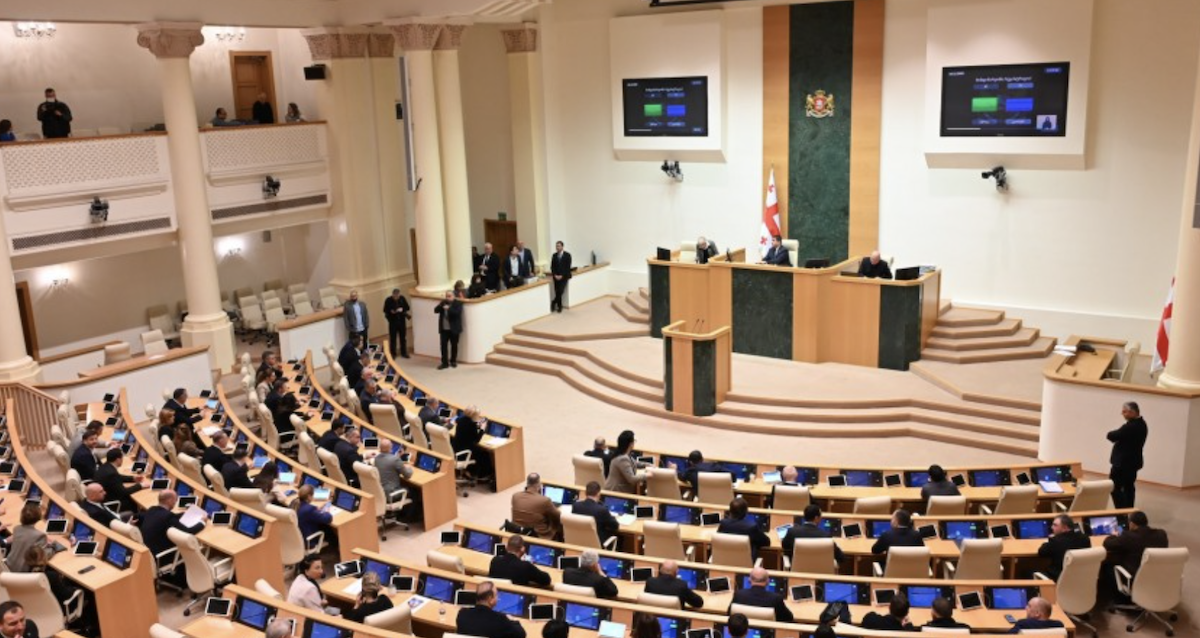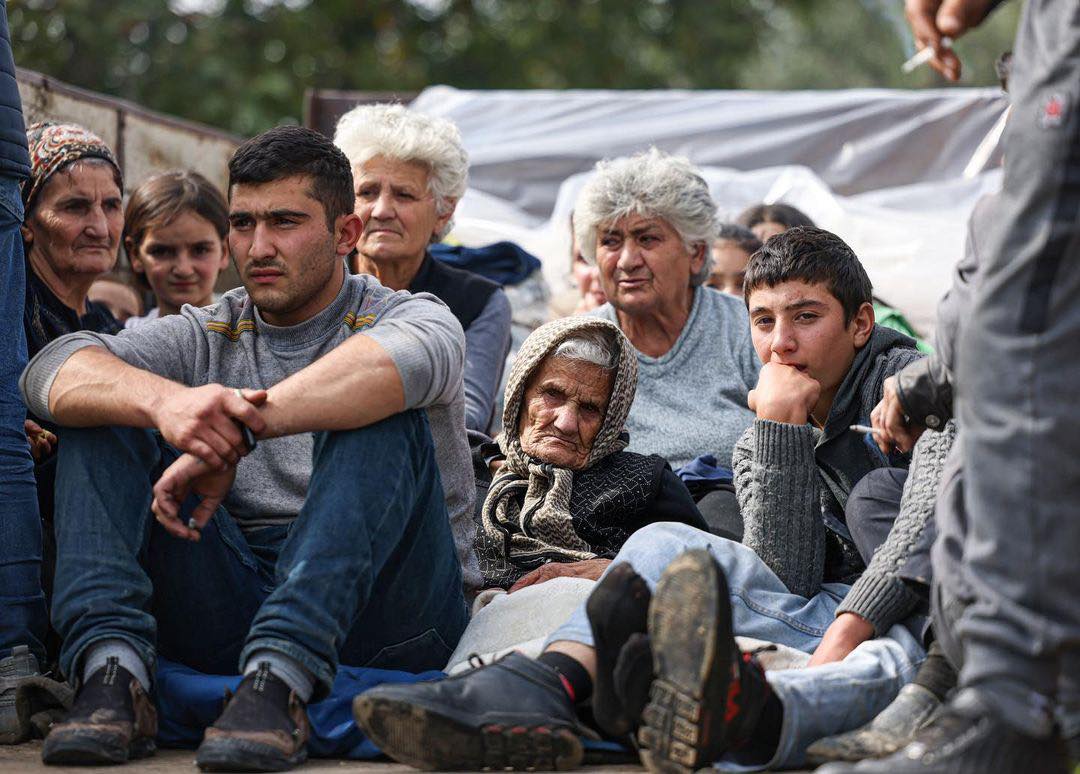Where worlds collide: a far-off Armenian village bordering Iran where Azerbaijanis used to live
On the way to Nrnadzor, drivers purchase household goods and groceries for fellow villagers from different shops of the neighboring town of Meghri. The distance to Yerevan, Armenia’s capital, is 400km.
The village, the most remote from the capital city, is located directly on the border with Iran. But even the nearest town – Meghri – is hard to reach for Nrnadzor residents.

“Our village is at the furthest point of Armenia. Public transport runs to Meghri only twice a week, and even then the local administration implemented it only a year ago. And there is no shop in our village. That’s why we support each other as best we can,” says 23-year-old Tatul Myyan.
The distance from Meghri to Nrnadzor is 30km, of which 13 km is a difficult dirt road. It runs along the valley of the Araks River.
The river divides Armenia and Iran. On the other side you can see Iranian villages, minaret towers and even Iranian farmers working their fields.
Armenia ends – or begins – with Nrnadzor which sits comfortably between two mountains. At this time of the year, the village is in bloom with its flowering pomegranate orchards [the name of the village translates to Pomegranate Gorge – JAMnews].
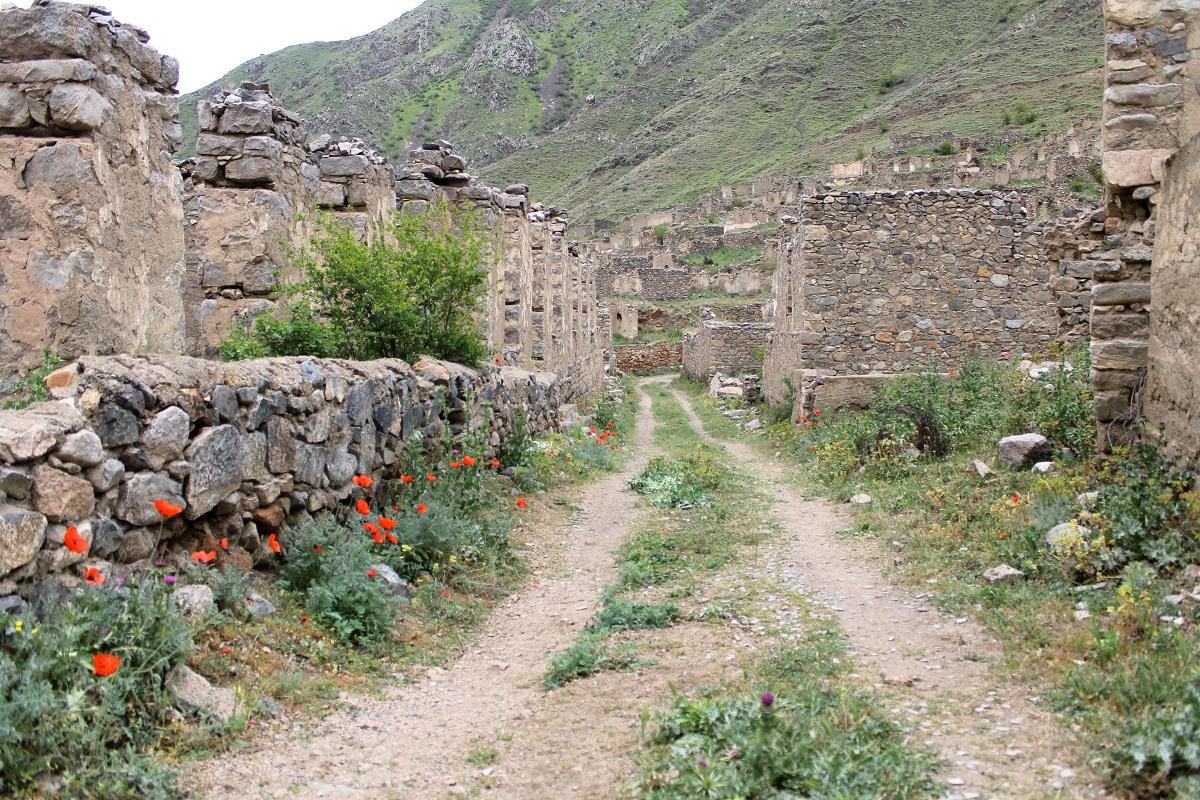
The ruins of the houses of former residents sit up on the hill. Below are the houses of the new residents of Nrnadzor. Only Azerbaijanis lived in the village during the Soviet years when it was called Newvadi.
Since the late 1980s, the Armenian population of the Nagorno-Karabakh Autonomous Region began a struggle for secession from Azerbaijan and for self-determination, and from 1991, large-scale military operations began.
“The village was big: the school alone had about a thousand students, with classes running in parallel. The Azeris left the village when Armenian-Azerbaijani relations grew tense, all together and on the same day, on 8 August 1991.
“There were no clashes in the village itself. The local administration ensured the peaceful departure of the Azerbaijanis. All left, except one – Heydar. He left Armenia two years later,” says Aleksan Boyajyan, the administrative head of Nrnadzor.

Later, families from different regions of Armenia moved from Gyumri, Kapan, Goris and Armavir. Many of the new residents came from Getashen village [the Azerbaijani name is Chaikend].
The village’s Armenian population left their homes and many moved here in 1991 after the Soviet army was deployed in an operation called ‘The Ring’ around Nagorno-Karabakh.
A lexander Chichyan is 71 years old. He remembers the village where he was born and raised. He says that he left his past there, but here, despite all the difficulties, he tried to start life anew.
“I took part in the self-defense of Getashen for two years. When we moved to Armenia, I was offered to settle in this village. We did not even know where it was. We left Getashen as we were, did not even take our things with us: me, my wife and my younger son. I sent the four older children to relatives in Armenia even earlier,” says Alexander Chichyan.

His wife Siran said that it was not easy for them to adapt to life in a new place – they had to start everything from scratch:
“Many Getashenians left Nrnadzor, left for Russia, but we stayed. Our two sons and daughter are also in the village.”

Her husband interrupts:
“I love Armenia, that’s why we stayed in Armenia. I respect my homeland. Whether it’s good or bad – it’s mine, that’s all.”

Life in Nrnadzor is hard for other families as well. Because of the past 15 years, many of the settlers left the village.
“Today we have 42 households, 128 inhabitants, whereas in the early 90s there were twice as many. People thought that it would be easy, but could not stand the severity of rural life. Today, the number of residents has stabilized. The villagers live in the former houses of Azerbaijanis of course.
Many have rebuilt the houses, repaired them, and they were also provided with land plots,” says the administrative head of the village Aleksan Boyajyan.
Nrnadzor is home to pomegranate, fig and persimmon growers. The village produces more than 200 tons of pomegranates each year, but the bad road to Meghri is a major problem.
Siran Chichyan says they collect 2-2.5 tonnes of pomegranates from one hectare of land, but the profits are barely enough to keep the farm going:
“The road is unpaved; we cannot transport pomegranates to the market. Resellers buy 1 kg for 250 drams [half a dollar], then sell it for four times more. And who should I complain to if I cannot transport the harvest myself?”

T he village maths teacher, 69-year-old Luba Muradyan, has lived in Nrnadzor for 19 years. She moved here with her husband and their two sons. Her five grandchildren were born here.
“Nrnadzor attracted me like a magnet. I left my work as a teacher in Meghri and got a job here at the school. It was an Azeri house with two rooms and a long balcony. We rebuilt it. New and old residents of Nrnadzor never saw each other. When we moved here, there were already only Getashenians,” says Luba.
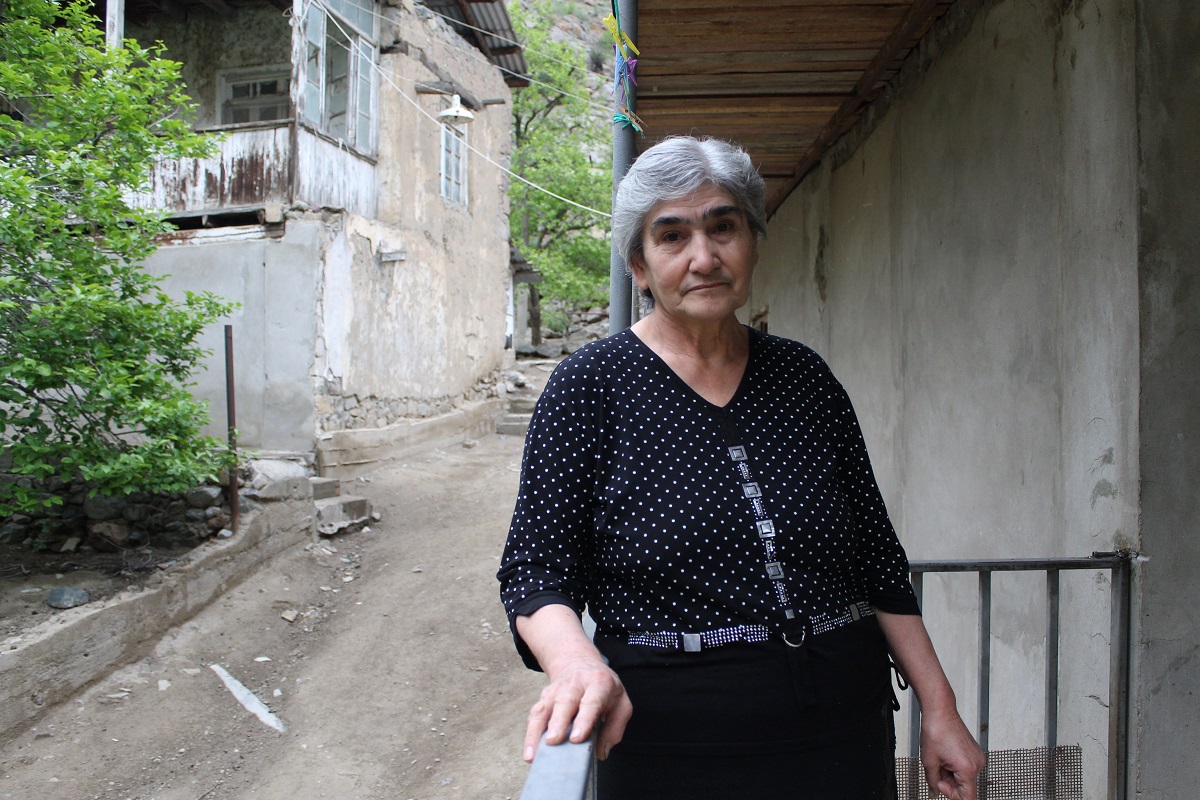
She is sad that the number of pupils in the school is decreasing:
“We were so happy – this year we had two first-graders. Next year there’ll also be two. In the second grade we have one student, in the third – three, in the fourth – none, in the fifth and sixth – two, in the seventh and eighth – one, in the ninth – many students – five, in the 10th – eight students, in the 11th and 12th, one each.”
A nna Babayan, a psychologist by trade, returned to her native village as soon as she graduated from university. She now works at the school teaching Russian and English:
“We are trying to make up for the lack of specialists. We do not have teachers of history, geography, chemistry, biology, history, Russian or English.”

Anna does not associate her future with the village:
“We are deprived of many things here. This is our village, our land, I love these places, but I want progress. We have such wonderful children. But what do they see? They cannot even go to Meghri to participate in extracurricular activities. Public transport goes there only on Tuesdays and Fridays.”
Aleksandr Boyajyan believes the village’s problems will be resolved when the issue with the road is resolved:
“The road will solve the problem of schools and children, and the problems for the villagers will be less. Because of this road, traders often prefer to buy pomegranates in the neighboring village of Shvanidzor and do not reach us.”
And yet, despite all the difficulties, new orchards are popping up in Nrnadzor.
“There is so little left of our homeland that every piece of land is of great importance to us, including this village,” says Alexan Boyajyan.
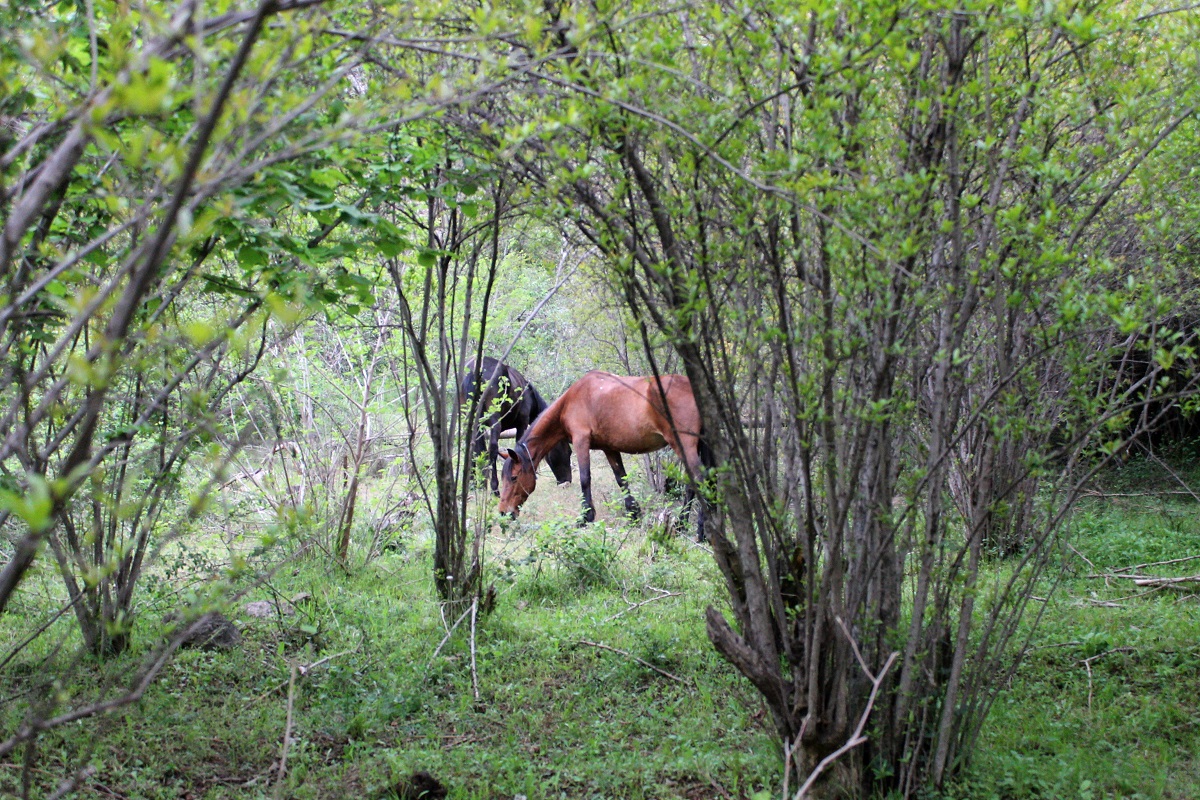
Toponyms and terminology used in the article, and views, opinions and strategies expressed in it do not necessarily reflect the views and opinions of JAMnews or any employees thereof. JAMnews reserves the right to delete comments it considers to be offensive, inflammatory, threatening, or otherwise unacceptable.















